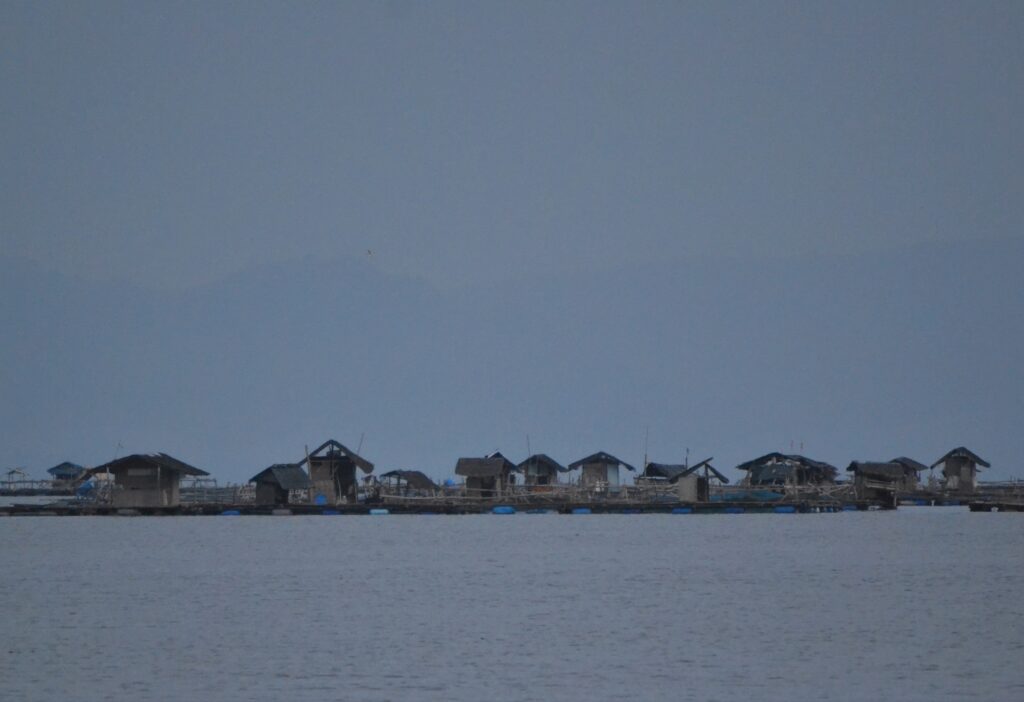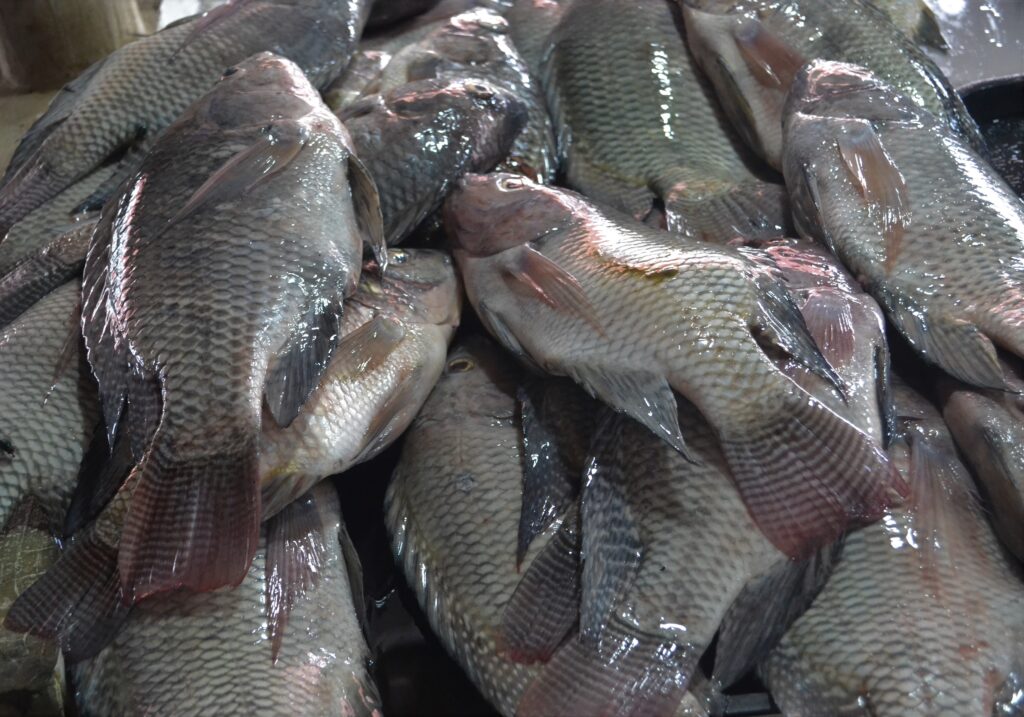AQUACULTURE: SOLUTION TO DWINDLING FISH CATCH
Text and Photos by Henrylito D. Tacio
“There’s more fish in the ocean.” This is the usual suggestion of friends to those whose boyfriend or girlfriend left them.
But such advice is no longer applicable these days as the oceans are running out of fish. “During the past decades, the people have enjoyed the abundance of the Philippine marine fishery resource,” said a position paper from Philippine Economic, Environmental and Natural Resources Accounting (PEENRA).
“Ask the old fisherfolks how they culled their harvests. Many of them would say that fish sized with less than a foot rule will automatically be thrown back to the water. Back then, they even have the luxury to choose the most palatable fish among the wide variety of species thriving in a particular fishing ground.”
This no longer holds true these days. Majority of the fishing grounds in the country are overfished. “Overfishing is the main issue, with today’s fishers ranging farther and trying harder to catch more – but there are more fishers and too few fish,” observes Gregg Yan, director for Communications for Ocean Philippines.

The fish, along with rice, are the staple food of Filipinos. In fact, about 56% of the animal protein consumed by the people come from fish. About 91% of fish caught are consumed domestically, according to Oceana Philippines.
“Not only is fish a vital food source, it also provides livelihood for millions of Filipinos,” said Oceana, an organization working exclusively to protect and restore the world’s oceans, in a press statement.
But there is a possible solution: aquaculture. Though a novelty in some parts of the world, aquaculture is like farming but only in waters. It was the Malay immigrants who introduced the first fishpond in the country.
But it was the Chinese who helped the country developed its aquaculture practices. “Our fishpond practices in most respects are similar to those of fishpond caretakers in the mainland of China,” said a Filipino marine expert.
Aquaculture species raised in the country are seaweed, milkfish (bangus), tilapia, brackish water shrimps, oysters, and mussels. Also grown in fishponds are some species of lapu-lapu and seabass.
Mariculture park – similar to an industrial or science park on land – is one of the best examples of aquaculture. In Davao Region, the city government of Panabo established the Panabo City Mariculture Park (PCMP) in 2006 in partnership with the Bureau of Fisheries and Aquatic Resources (BFAR), a line agency of the Department of Agriculture.
Academician Rafael D. Guerrero III of the National Academy of Science and Technology explained the Panabo City government provides local governance and regulations at the PCMP while the BFAR provides technical and advisory services. To attract private investors, infrastructure facilities and support services were also provided.
The total investment cost (from 2006 to 2013) was reportedly P467.7 million with P35.5 million coming from BFAR seed money, P21.5 million from the city government, and P72 million from the Land Bank of the Philippines in Davao. The bulk of the amount (P340 million) came from private entities.
The PCMP has a total area of 1,075 hectares covering three out of four coastal barangays of Panabo City. Within those areas, 60 hectares are allocated for marine fish cage and 20 hectares for seaweed production.
“Today, PCMP has been identified as one of the most developed Mariculture parks in the country,” says Dr. Guerrero, the man who popularized tilapia in the country.
As a result of the laudable initiative, the PCMP has contributed food security to the city with 8,389.59 metric tons of fisheries with a value of P830 million. In addition, it has provided 514 jobs to the community.

There are several ways of fish-farming methods that farmers can apply. Some of these methods are based on outdoor ponds, some on fenced-off areas of rivers or bays, and some in buildings.
“But virtually all these would integrate fish production with other industrial or ecological activities: growing hydroponic vegetables, recycling urban waste, purifying fresh water, keeping rivers or wetlands healthy,” writes Anne Platt McGinn, a Worldwatch Institute researcher.
Meanwhile, aquaculture has been helping in meeting the demands of fisheries among Filipinos. Last year, the BFAR reports the aquaculture sector shared 52.59% of the total national fisheries production.
“We value and believe in the capacity and potential of aquaculture industry to help in ensuring the country’s fish sufficiency and food security,” BFAR Director Eduardo Gongona told Marid Agribusiness.
Gongona added that the country has five aquaculture potentials “which we continue to develop and promote not just locally, but globally.” He was referring to bangus, seaweeds, shrimp, shellfish, and tilapia.
“Development plans and programs are already in place for these commodities,” he pointed out.
Fish is considered the “poor man’s source of protein.” In most industrialized countries, the primary sources of protein come from chicken, beef, and pork. Raising fish is more economical than rearing livestock.
Studies have shown that growing a kilogram of beef in the feedlot typically takes seven kilograms of feed. Although chicken is the most efficient of all land-raised meats, it still takes an estimated 2.2 kilograms of feed to yield a kilogram of chicken.
In comparison, fish need two kilograms of less feed per kilogram of live-weight gain. Fish, suspended in the water, do not have to burn calories trying to heat their bodies, according to Hal Kane, a staff researcher of the Worldwatch Institute.
“The ultimate success of aquaculture may lie in the ability of tis developers to leapfrog the mistakes of agriculture – to resist putting chemicals in the water and hormones in the fry, and consuming vast quantities of resources to get their product out,” suggests McGinn.
“The fish farmers’ ticket to the future is to align their business with the growing movement toward integrated, closed-loop production that is already making waves in the agricultural and timber industries,” McGinn adds.
In the meantime, Filipino consumers have to suffer from the dire supply of fish. The Philippine Statistics Authority reported that fish production has dipped spirally. Last year, the total volume of fisheries production went down by 1.04% compared to the previous year’s level.
Jeannyline T. Arriaga, from Bansalan, Davao del Sur, is a doting mother. She usually wakes up early in the morning to prepare breakfast for her two children, who are going to school. Generally, she cooks rice and fish.
Lately, however, she observes that the fish she usually buys at the public market has become scarcer. In fact, there are days when she could not find any that she buys another kind of fish. Her children complain because they don’t like the new kind of fish she serves to them.

Jeannyline also notices that if the fish she likes is available, they are becoming smaller. “They are not only getting scarcer but they are becoming expensive, too,” she points out.
She may not be aware of it but it is not the only fish she likes that is becoming rarer and pricey but the same is true with other varieties of fish.
A survey by the Social Weather Stations commissioned by Oceana in 2017 found that 82% of Filipinos believe fish sold in the markets are more expensive now compared to 10 years ago. Meanwhile, 54% of respondents said the size of fish has become smaller and 55% said they found less varieties of fish in local markets compared to a decade ago.
Where have all our fish gone? Davao Gulf, one of the country’s fishing grounds, is a case in point. In his study, “Assessment of the pelagic fisheries in Davao Gulf,” Jose Villanueva of the Bureau of Fisheries and Aquatic Resources (BFAR) found that 45 to 50 percent of the total fish caught daily by most of the fishermen in the gulf are juvenile – too young, not marketable and, therefore, wasted. “If this will continue, there will come a time that we can no longer catch fish here,” he warned.
Villanueva’s findings confirmed the results of a 10-year study entitled “Strengthening Governance and Sustainability of Small-scale Fisheries Management in the Philippines: An Ecosystem-based Fisheries Management Approach in Davao Region.” It was a collaborative effort of the BFAR, local government units and the Department of Science and Technology (DOST) Region 11.
The volume and quality of the fish in the Davao Gulf have been in constant decline at least since the year 2000, according to the study, which involved at least 265 fishermen and was undertaken with the Kuala Lumpur-based World Fish Center.
The study looked at the volume and quality of the harvests of 10 commonly fished species in the gulf: matambaka, tamban, moro-moro, caraballas, bilong-bilong, lapu-lapu, danggit, molmol, talakitok, and maya-maya.
Except for maya-maya, the harvest numbers for the species have been falling. At the current rate of decline, the caraballas, bilong-bilong, molmol, and danggit may all disappear completely from Davao Gulf within a decade. The matambaka, tamban and moro-moro are more resilient, but even they may disappear within a generation.
“We are running out of fish and running out of time. For a country known for marine biodiversity, there are very few fish left to catch,” Vince Cinches, Oceans Campaigner for Greenpeace Southeast Asia, told a national publication.
“Like the other vital resources such as forests, Philippine fisheries are about to collapse,” deplored Jethro P. Adang, the new director of Mindanao Baptist Rural Life Center (MBRLC), a non-government organization based in Davao del Sur.
The country claims some 220 million hectares as its territorial waters: 193.4 million hectares of which are part of the oceans and the remaining 26.6 million hectares that belong to what is called as Exclusive Economic Zone (EEZ) or those waters surrounding the country up to 200 nautical miles from the shore.
The Philippines has also the Verde Island Passage – situated halfway in the provinces of Batangas and Mindoro – which has “the highest concentration of marine species in the planet,” according to the Southeast Asian Fisheries Development Center (SEAFDEC). Based on studies, its reefs are home to nearly 60% of the world’s known fishes as well as over 300 species of corals.
But despite such huge areas and distinction, the fishermen and those who rely on the oceans and other bodies of water are still grappling with poverty. In fact, most of them belong to the “poorest of the poor” in the society.
“Poverty in coastal communities, the progressive decline of fish population and catch, the pervasive encroachment of commercial fishing vessels in municipal waters are just some of the issues in fisheries that may not be grabbing the national headlines… but they heavily impact in real ways the national economy, food security, the health of our oceans, employment, and our response to the climate crisis,” deplored Atty. Gloria Estenzo Ramos, vice-president of Oceana Philippines.

